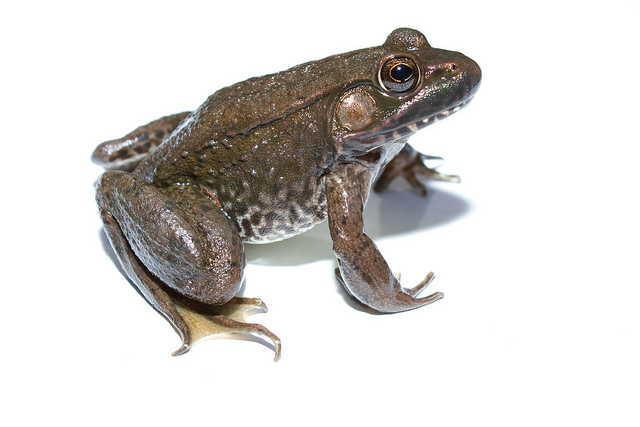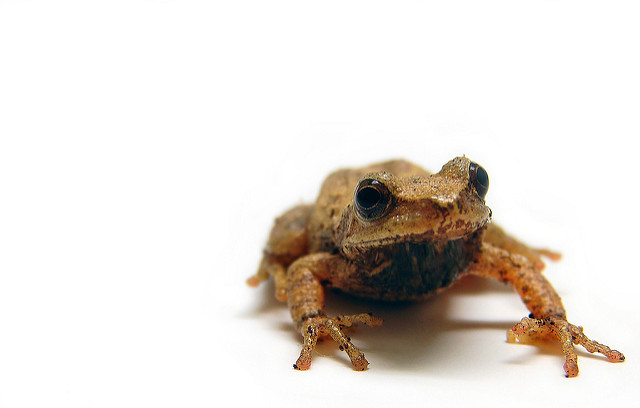Illinois is home to a diverse range of tree frog species. These small amphibians spend most of their lives in trees and descend to mate and lay eggs. Their toe pads allow them to climb and cling to vegetation
Tree frogs are a delight to observe and listen to, especially in spring and summer when their chorus of calls fills the air. From the high-pitched peep of the spring peeper to the musical trill of the gray tree frog, Illinois tree frogs create a symphony of sound.
In this article we will take a closer look at the different tree frog species found in Illinois, their key features habitat, diet, breeding habits and more.
Overview of Tree Frogs in Illinois
There are around 10 species of tree frogs found in Illinois. The most common and widespread species include:
- Gray tree frog
- Spring peeper
- Western chorus frog
- Cope’s gray tree frog
- Green tree frog
- Bird-voiced tree frog
- Boreal chorus frog
Other species with limited distributions include the upland chorus frog, Illinois chorus frog, and Blanchard’s cricket frog.
Tree frogs in Illinois range in size from just over 1 inch to around 2.5 inches in length. They come in shades of green, brown, gray, and sometimes yellow. Many species can change color to blend in with their surroundings.
Characteristic features of tree frogs include large eyes, adhesive toe pads, and smooth or slightly warty skin Their hind legs are larger than their forelimbs for jumping and climbing
Habitats and Diet
Tree frogs in Illinois inhabit a variety of wooded, shrubby, and grassy wetlands and riparian zones. This includes:
- Forests
- Woodlands
- Ponds
- Lakes
- Marshes
- Swamps
- Streams
- Rivers
They are found from the forest floor up to the treetops. Tree frogs spend most of their time in vegetation near the water’s edge or in overhanging branches.
These frogs emerge at night to hunt insects and other invertebrates. Their diet consists of moths, flies, spiders, ants, crickets, beetles, and more.
Breeding and Life Cycle
The breeding season for Illinois tree frogs ranges from March to August depending on the species. Most breed in spring or early summer.
Males attract females with their distinctive breeding calls. Eggs are laid in shallow water or ponds, either singly or in masses or films containing hundreds of eggs.
Tadpoles hatch within days or weeks and undergo metamorphosis into froglets after 1-3 months. Sexual maturity is reached in 1-3 years, and lifespan is approximately 3-5 years on average.
Notable Species in Illinois
Here is an overview of some of the most common and interesting tree frogs found in Illinois:
Gray Tree Frog
The gray tree frog is a widespread species found throughout most of the United States. It can change color from green to gray to blend in with its surroundings.
Its musical trill breeding call sounds like a high-pitched bird. Gray tree frogs inhabit wooded areas and breed in ponds and lakes.
Spring Peeper
The tiny spring peeper is less than 2 inches long. Its high-pitched beeping call is one of the first signs of spring. These tree frogs breed in woodland ponds and wetlands.
Their coloring can range from brown to olive green, often with a dark cross marking on the back.
Cope’s Gray Tree Frog
Similar to the gray tree frog but with a faster trilling call, Cope’s gray tree frog is found in the southern parts of Illinois. It inhabits wooded swamps and floodplains.
Green Tree Frog
Mainly found in extreme southern Illinois, the green tree frog is bright green in color with white stripes along the sides. They give a sharp, nasal call sounding like a quacking duck. Green tree frogs live in cypress swamps and marshes.
Western Chorus Frog
A small frog with three stripes down its back, the western chorus frog has a repetitive call like running a finger along a comb. These frogs are common in grassy wetlands across Illinois.
Bird-Voiced Tree Frog
The aptly named bird-voiced tree frog makes a whistling call resembling a bird. Growing up to 2 inches long, this species has warty skin and inhabits swamps and creeks in southern Illinois.
Threats and Conservation
Many tree frog species have declined due to habitat loss, fragmentation, and degradation. Pollution, invasive species, and climate change also threaten these sensitive frogs. Several species are listed as endangered or threatened in Illinois.
Protecting wetlands, forests, and riparian buffers is key to tree frog conservation. Monitoring populations, managing invasive species, and reducing pollution and runoff also helps protect vulnerable tree frog populations in Illinois.
Enjoying Tree Frogs in Illinois
Tree frogs bring magic to spring and summer nights with their chorus of calls. Take a walk near a pond or wetland at dusk or dawn to see and hear these remarkable frogs.
When handled properly, some species can make interesting terrarium pets. Always check regulations before capturing any wild frogs.
Tree frogs play an important role in wetland ecosystems by controlling insects. Conserving their woodland and riparian habitats ensures we can continue enjoying Illinois’ spectacular tree frogs for generations to come.

Green Frog (Lithobates clamitans)

The Green Frog is abundant throughout northern, eastern and the exterior border of the state of Illinois. It is typically greenish-brown with dark mottling on its head, chest and under its legs. The throat color ranges to yellow for a male to white for the females.

These frogs can produce as many as 6 different calls – however the most distinctive sound is a throaty boink that sounds like a loose banjo string being plucked. Listen to the video below to hear!
Spring Peeper (Pseudacris crucifer)

The spring peeper measures from 3/4″ to 1-1/2″. It can be distinguished by it’s dark colored “X”across its back. This frog is quite common throughout the state of Illinois except for within the Grand Prairie.

It’s chorus of a shrill high pitched call can be heard from up to a 1/2 mile away! Listen to its call in the video below. Similar to the American toad, these frogs spend most of its time on land and only are in the water to breed and lay eggs. Like most tree frogs, the spring peeper is nocturnal and loves to hunt ants, spiders and other small insects during the evening.
5 Legged Blue-spotted Salamander! and Chorus Frogs | Field Herping Northern Illinois
FAQ
Do tree frogs live in Illinois?
The treefrogs of Illinois have a sticky cup at the end of each toe that allows them to climb vertical surfaces such as windows and tree trunks. Treefrogs may be found in branches more than fifty feet off the ground.
What should I do if I find a tree frog?
If you don’t wish to kill the tree frogs caught, they can be removed by rubbing vegetable oil where they’re stuck and it will release them unharmed. Once detached you can take them away from your property to relocate somewhere off your land. Take them at least 2 miles away to insure they don’t return.
What do Illinois tree frogs eat?
The green treefrog eats arthropods (spiders, insects, mites and others).
Are tree frogs good to have around?
Tree frogs mostly eat insects (mine are especially fond of moths attracted to my back porchlight) and other small invertebrates. Birds, snakes, and other predators eat them. They are beneficial wildlife for both reasons.
Where do tree frogs live in Illinois?
Bird-voiced Treefrogs are found in the southern tip of Illinois in swampy forests, marshes, and wetlands. They look very similar to the larger Gray Treefrog, so be careful when identifying. Bird-voiced Treefrog Range Map
What do frogs look like in Illinois?
Adults are small and range from 1 to 1.5 inches long. They’re typically tan or brown, with the females being lighter in color. Both males and females usually feature a darker cross or ‘X’ on their back. These tiny frogs can be found all over Illinois. You’ll typically spot Spring Peepers on the forest floor among the leaves.
What is a gray tree frog?
Gray Tree Frog The gray tree frog can be found in most parts of the United States and comprises of two species: the eastern gray tree frog (Hyla Versicolor) and Cope’s gray tree frog (Hyla Chrysoscelis). They are very similar in appearance and habitat, though there are some telltale signs that can tell them apart.
What is a tree frog?
By definition, a tree frog is any frog species that spends the majority of its lifespan in an arboreal state. What that means is that they live primarily in trees or other high-growing vegetation. These frogs typically only descend to the ground to mate or spawn, where some species build foam nests on leaves.
Where do tree frogs live?
What that means is that they live primarily in trees or other high-growing vegetation. These frogs typically only descend to the ground to mate or spawn, where some species build foam nests on leaves. As adults, tree frogs rarely leave their arboreal habitat.
Do tree frogs have white stripes?
White stripes down their sides sometimes have black borders. Green Treefrogs can be hard to find in southern Illinois since they spend most of their lives high in trees. They also can change color based on light and temperature. American Green Treefrog Range Map
